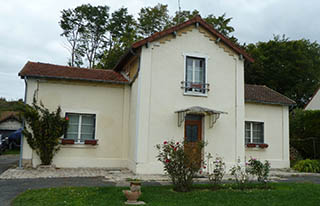Prochain point : lat="49.134862" lon="2.138997"

Old Station
The little train running through the Sausseron Valley
A line of local interest...
In 1879 Léon Say, general councillor for L'Isle-Adam, asked for a study to be carried out for a secondary, local railway line to serve the farms and quarries in the Sausseron Valley. Once the relevant procedures had been undertaken and the work completed, the track between Valmondois and Epiais-Rhus was inaugurated on June 13, 1886 by the Société Générale des Chemins de Fer Économiques. Epiais-Rhus’s temporary status as a terminus meant that it was the only station on the line to have a water tower and coal reserve for refuelling the locomotives. The final Valmondois-Marines line came into operation in 1891.
The 22.3 km route had a huge impact on the local geography: streams were straightened, marshes drained and bridges built. The journey took one hour and ten minutes at a speed of 20 km/h. By around 1930, 150,000 passengers were using the line and 20,000 tonnes of goods were being transported. But in 1948, following a decline in numbers, the General Council demanded an end to the transport of freight. In the following year they voted for the total abolition of the line. The rails were removed in the 1950s and the track converted into a hiking trail.
... that had its own private stop
The remains of a wrought-iron gate en route to Ramponne mark the location of the stop and private access reserved for the Château de Brécourt. The owner of the estate at the time, Ambroise Rendu, was the brother-in-law of Octave Stromberg, chairman of the Société Générale des Chemins de Fer Économiques, a connection that was probably not unrelated to the creation of the halt.
The stop took the form of a small platform with two symmetrical, semi-circular side staircases with banisters made of reinforced concrete and decorated with intertwining branches. This was a style found in many private and public gardens (such as Buttes Chaumont in Paris) in the nineteenth century. The stop was commissioned in September 1888 and was served until the line closed.




